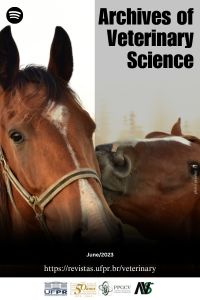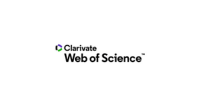Avian haemosporidian parasites: An updated review
DOI:
https://doi.org/10.5380/avs.v28i2.91244Palavras-chave:
Birds, Blood parasites, Diagnosis, Distribution, TreatmentResumo
Avian hosts are vulnerable to many infectious agents including parasitic diseases. Haemosporidians (Sporozoa: Haemosporida) is a group of internal parasites of blood that infect domestic and wild birds causing loss of productivity and sometimes death. More than 200 species of haemosporidian parasites were identified in the blood and tissues of avian hosts. However, Leucocytozoon, Plasmodium, and Haemoproteus spp. are the most common and widely distributed haemosporidian parasites. Insect vectors including Culex mosquitoes, Simulium spp., midges or hippoboscid flies, and Argas persicus are the main route of infection and transmission of haemosporidian parasites. Climatic conditions such as temperature, humidity, and vector activities can also play an important role in the distribution of infections. Affected birds may show no clinical signs during mild infection, however, signs of loss of weight, drop in egg production, anemia, anorexia, pale comb, green droppings, dyspnea, and variable mortalities may be observed especially in heavy infection. Different lesions in the internal organs such as the liver, spleen, and kidneys can be detected. Diagnosis of haemosporidian parasites is mainly based on microscopic examination of stained blood smears and/or molecular identification of the different stages of the parasite in the blood or tissues. Control of infection depends on the eradication of insects and the treatment of the affected birds using specific drugs. This review article was designed to take a look at avian haemosporidian parasites regarding types, distribution, diagnosis, and control.
Downloads
Publicado
Como Citar
Edição
Seção
Licença
Autores que publicam nesta revista concordam com os seguintes termos:
- Autores mantém os direitos autorais e concedem à revista o direito de primeira publicação, com o trabalho simultaneamente licenciado sob a Creative Commons - Atribuição 4.0 Internacional que permite o compartilhamento do trabalho com reconhecimento da autoria e publicação inicial nesta revista.
- Autores têm autorização para assumir contratos adicionais separadamente, para distribuição não-exclusiva da versão do trabalho publicada nesta revista (ex.: publicar em repositório institucional ou como capítulo de livro), com reconhecimento de autoria e publicação inicial nesta revista.
- Autores têm permissão e são estimulados a publicar e distribuir seu trabalho online (ex.: em repositórios institucionais ou na sua página pessoal) a qualquer ponto antes ou durante o processo editorial, já que isso pode gerar alterações produtivas, bem como aumentar o impacto e a citação do trabalho publicado.














